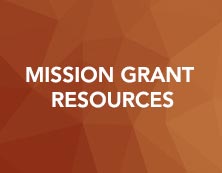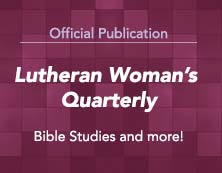How to Plan and Conduct Successful LWML Meetings
Purpose
Welcome to Meetings 101! In the following outline you will find helps and tips that will assist you in putting together a great LWML meeting. As the planner or leader, you must first have components in place for the meeting. These include a purpose statement, goals, and objectives. After these are established, let the planning begin!
* Meetings *
Types
There are various types of meetings:
- General Meeting – All members
- Circle Meeting – Circle members
- Board Meeting – Officers and appointees
- Committee Meeting – Committee members
Style
Choosing the correct style for the meeting is a must:
- Formal Business Meeting – Meeting with goals and objectives set and an officer presiding over the meeting
- Informal Business Meeting – Meeting that is not planned well in advance and generally meets in a neutral setting like a restaurant or someone’s house
- Conference Meeting – Meeting for discussion, consultation, or instruction
- Panel Discussion – Discussion of a subject by a group of persons who form a panel before a group of people
- Forum – Meeting for open discussion
Goals
These should be standard goals for LWML meetings:
- Assist LCMS women to affirm their faith in the Triune God
- Enable LCMS women to use their gifts in ministry to others
- Provide opportunities to bond in fellowship
- Provide opportunities to praise and serve God
- Enable the members to establish goals, set timelines, and accomplish the ministry they have chosen to undertake
- Provide the members with a voice in making decisions for the organization
Content
Every meeting should include these elements:
- Prayer
- Devotion and/or Bible Study
- Business
- Activity and/or Fellowship
Publicity
Every publicity item should include the basics:
- Meeting date
- Meeting beginning and ending times
- Meeting place
- Main subject or focus of the meeting
- Main items of business to be discussed
- Contact name and number (and/or e-mail address) if there are any questions
Go beyond the ordinary when it comes to publicity. Try more than one approach:
- Bulletin announcements
- Newsletter announcements
- Every member mailing
- Personal phone calls
- Posters
- E-mail announcements
- Written announcements for the Sunday morning announcement time
Preparation
An agenda — use the following as a guide:
- What needs to be discussed at this meeting?
- How much time will each topic take?
- In which order should the business be handled?
Program
- Has a specific theme been chosen for the meeting? Has this been communicated to those involved so all elements of the meeting can be focused on that theme?
- Will a guest speaker be invited to present a topic of interest to the group?
- Will a musical presentation be performed? By whom?
- Will the group be involved in a service project? Who will organize it?
- Who is responsible for the devotion and/or Bible study?
- Will vignettes or sketches be performed by members?
- Has the timetable been established/communicated to all involved in the meeting?
Meeting Area
- Has the space been reserved for the meeting? Is the size of the room adequate for those expected to attend and for the activities being planned?
- Will you need a formal or informal seating arrangement?
- Are refreshments being served? Who will provide them and who will serve?
- Is there a need for specialized equipment: Lectern, microphone, projection screen, equipment to play specific media, self-stick wall pads and markers, etc.? Will someone be on hand who knows how to operate any specialized equipment?
- Are printed handouts needed for any element of the meeting? Who is responsible?
* Leader Preparation *
Checklist
- Begin by asking God’s direction through personal devotion and prayer
- Organize yourself before you arrive at the meeting by making a checklist:
- Do I have my meeting outline?
- Do I know who the speaker is, and am I able to introduce him/her or shall I have appointed someone else to do this?
- Have all those involved in this meeting been contacted, reminded, and encouraged for the service they will perform?
- Upon arrival at the meeting place at least 30 minutes before the meeting starts:
- Check that the meeting area is set up appropriately
- Make sure that all the equipment requested is in place
- See to it that those in attendance will feel comfortable and welcome in the setting
- Greet the speaker and verify the topic, any background information you will need for an introduction, and confirm the time allocated to the speaker
- Check with those assisting with the meeting, both as a way to ensure that all details are covered and to encourage those who are faithfully giving of their time, talents, and efforts
- Welcome those arriving with enthusiasm and a warm smile
Meeting
- Call the meeting to order on time by the method most common to your group: voice, gavel, bell, etc.
- Welcome all in attendance and offer, or have someone else offer, an opening prayer, asking God’s guidance and blessing on your meeting
- Acknowledge and introduce guests, the pastor, and your special speaker
- Preview your agenda so everyone will have the “big picture” for the meeting
- Stick closely to your timeline and agenda. During the business portion, move discussion along as appropriate
- Recognize every voice and listen with interest so you might summarize comments when pertinent to the discussion as a whole
- Give praise for completed tasks and offer all glory to God!
Follow Up
- Immediately upon returning home after the meeting, evaluate the meeting, making note of changes you feel would improve the meeting next time
- Review actions taken by the group which need further implementation
- Appoint committees as necessary
- Delegate tasks as appropriate
- Make contacts between meetings to offer encouragement and inquire as to progress
- Process your evaluation by organizing your next meeting or event to reflect the changes or suggestions you developed
- Offer prayers of thanks and praise to God for this opportunity to serve and for each of the people involved in your group as they find ways to serve using their own gifts and abilities
* Meetings That Move *
Some strategies to make your LWML meetings flow smoothly
Types
Two types of movement happen in most business meetings:
- Lateral – gives full exposure to the subject
- Longitudinal – moves forward, making progress toward the agenda
Balance can be achieved when the effective leader accommodates full discussion and yet moves ahead at the appropriate moment!
Technique
- Introduce agenda or topic
- Present introductory information and ask assigned committees for their findings
- Encourage discussion while at the same time keeping it moving and on the topic
- Draw out opinions and different viewpoints
- Give equal time to all
- Conclude with short summary of discussion and ask for appropriate action (e.g., motion, assignment, table item, etc.)
It is the task of the leader to promote the efficiency of discussion and avoid getting “bogged down” with information not pertinent to the subject! This should be done kindly and in a Christian manner.
Encourage Participation
- Ask for questions
- Ask a few people by name if they have anything to contribute
- Ask if anyone has a different idea which has not been presented
- Give value to each contribution
Limit Participation
If there is an over-contributor, you could say …
- “So that everyone is heard on this subject, let’s limit our comments to two per person.”
- “Your comment is very good. Thank you. Could we hear from someone else?”
- “Many here have not spoken so could we hear from some of you who have not yet spoken?”
Focus Discussion
If the discussion begins to overlap into other areas, you could say …
- “Interesting comment. We might put it to good use at another time.”
- “Let’s briefly review what has been said.”
- “So far we have discussed this part of the subject, now how about some of these other areas?”
Keep the Discussion Moving
If an appropriate period of time has been given to a subject, you could say …
- “Do you feel we have spent adequate time on this? Can we move on?”
- “It is apparent there are several points of view and some questions unanswered. Shall we table this subject until we have more information? A committee or person could research for us and bring findings to the next meeting.” (Leader suggests which would be most appropriate action.)
- “Let’s get together after the meeting and discuss this, since just a few are involved in this item. I’ll be happy to sit in!”
Confirm Continuity
If items are unresolved from the meeting, you could say …
- “Are there items to include on the agenda for the next meeting?”
- “Are there topics to review before the next meeting?”
- “Let’s review the subject presented at the last meeting and hear the committee findings.” (Ask committee spokesman to present information.)
And let us consider how we may spur one another on toward love and good deeds. Let us not give up meeting together as some are in the habit of doing, but let us encourage one another
(Hebrews 10:24–25a).
* Put PIZZAZZ in LWML Meetings *
You have known people who have a “special something” about them. Perhaps you have called it charisma, panache, or style. It is also known as PIZZAZZ! These people radiate energy to others and bring “sparkle and spirit” into everything they do. It is a joy to be with them and to work with them.
What is PIZZAZZ?
- Having spirit, sparkle, and enthusiasm
- Radiating energy to others
- Keeping a positive attitude
- Enthusiastically reflecting a variety of interests
- Knowing when to listen and when to speak
- Really caring about others
- Having a sense of humor, especially about yourself
- Being an interesting conversationalist
- Remembering it is not just about us
Practice PIZZAZZ and add sparkle, energy, and spirit to your LWML meetings!
PIZZAZZ the Meeting
- Arrange the meeting room attractively
- Prepare the agenda, start on time, and with prayer
- Set goals which challenge everyone
- Involve all members in an activity or sketch
- Publicize program and speaker well in advance
- Ask for information from a fact-finding committee on last meeting’s tabled items
- Keep meetings moving and avoid long discussions
- Include some humor — a good tool to break tension
- Set an example — “Serve the Lord with Gladness”
* The End *
This concludes MEETINGS 101!
May you, with the help of God, move on to better and more exciting LWML events and gatherings!
Published by Lutheran Women’s Missionary League









